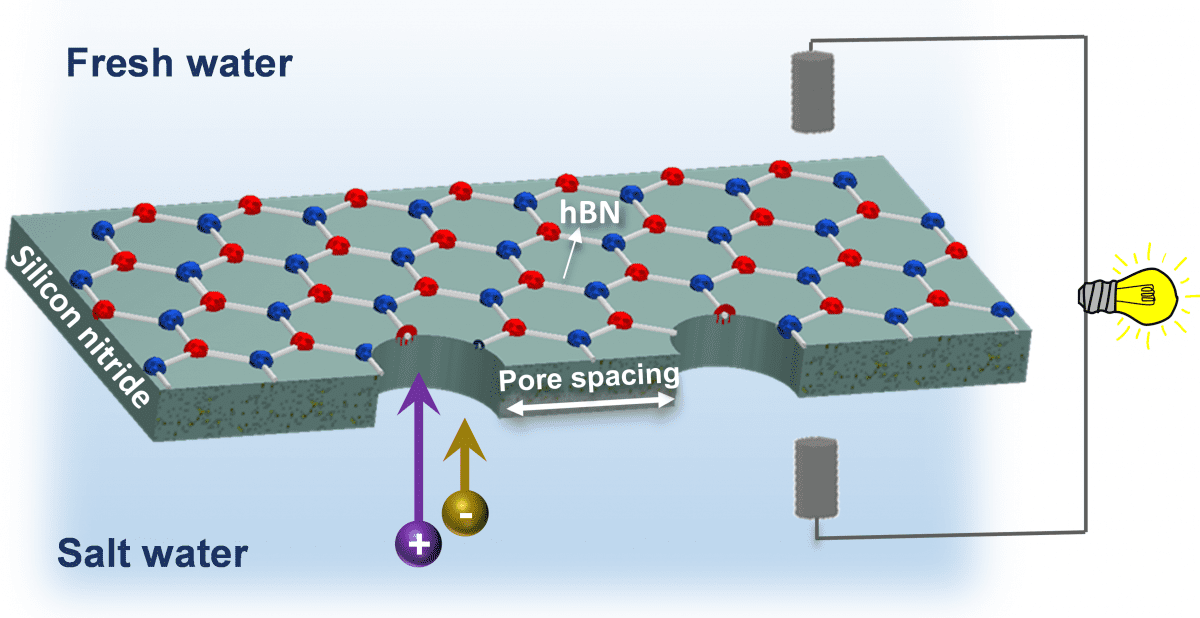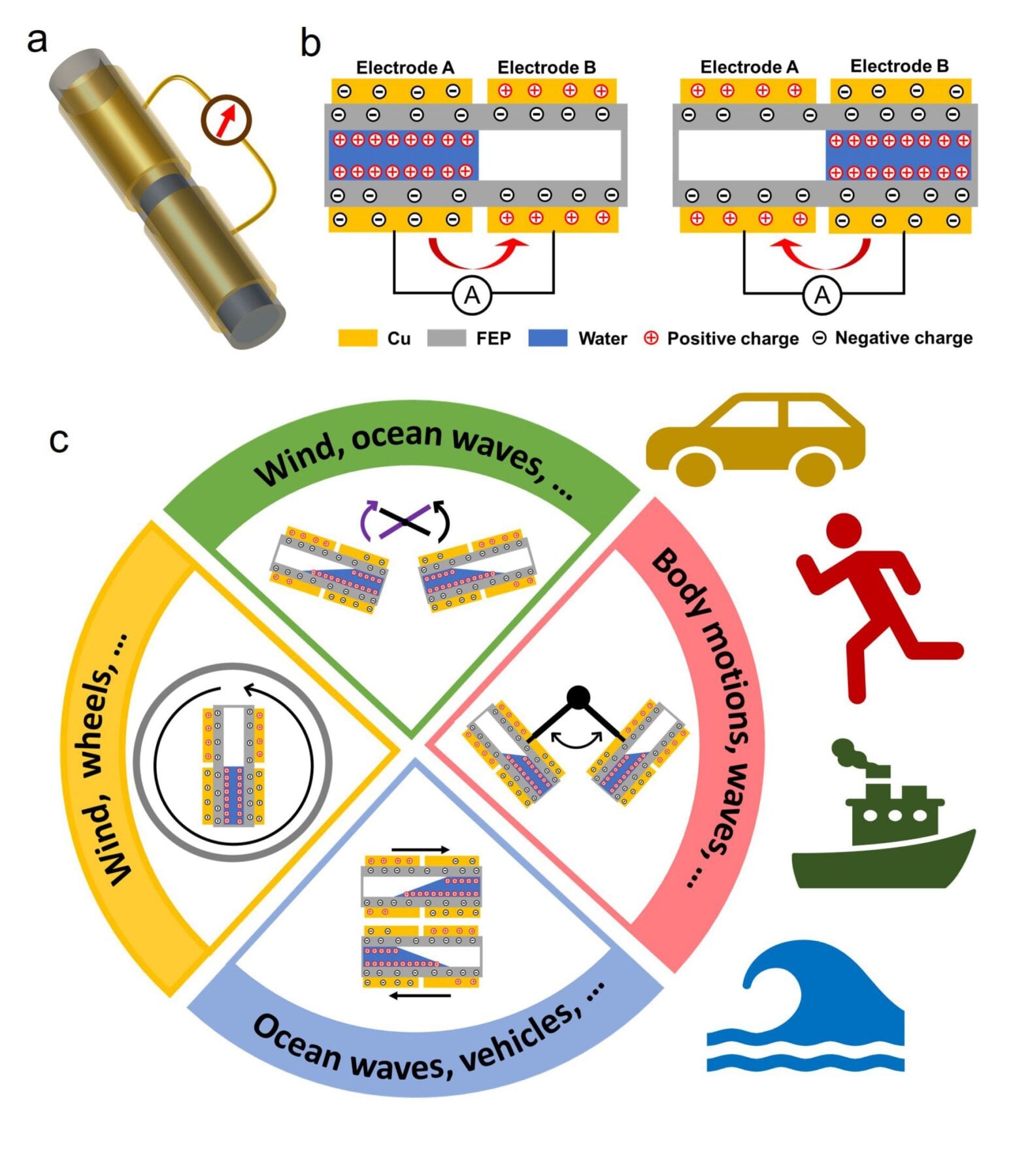
Zero-carbon energy from sea water a step closer
Nanofabrication tool developed at McGill may solve blue energy puzzle
Researchers at McGill University have demonstrated a technique that could enable the production of robust, high-performance membranes to harness an abundant source of renewable energy.
Blue energy, also known as osmotic energy, capitalizes on the energy naturally released when two solutions of different salinities mix – conditions that occur in countless locations around the world where fresh and salt water meet.
The key to capturing blue energy lies in selectively permeable membranes, which allow only one constituent of a saltwater solution to pass through – either the water molecules or the dissolved salt ions – but not the other.
A problem of scale
To date, large-scale blue energy projects such as Norway’s Statkraft power plant have been impeded by the poor efficiency of existing membrane technology. In the laboratory, researchers have developed membranes from exotic nanomaterials that have shown great promise in terms of the amount of power they can generate relative to their size. But it remains a challenge to turn these vanishingly thin materials into components that are large enough and strong enough to meet the demands of real-world applications.
In results recently published in Nano Letters, a team of McGill physicists has demonstrated a technique that may open the way to overcoming this challenge.
“In our project, we aimed to remedy the inherent mechanical fragility problem while exploiting the exceptional selectivity of thin 2D nanomaterials by fabricating a hybrid membrane made of hexagonal boron nitride (hBN) monolayers supported by silicon nitride membranes,” explained lead author Khadija Yazda, a postdoctoral researcher in the Department of Physics at McGill.
McGill-made tool facilitates research
To achieve the desired characteristic of selective permeability, Yazda and her colleagues used a technique developed at McGill called tip-controlled local breakdown (TCLB) to “drill” multiple microscopic holes, or nanopores, in their membrane. In an advance on previous research that focused on experimental prototypes with a single nanopore, the McGill team was able to exploit the speed and precision of TCLB to prepare and investigate membranes with multiple nanopores in various configurations of pore size, number and spacing.
“Our experiments on pore-pore interaction in nanopore arrays shows that the optimum membrane selectivity and overall power density is obtained with a pore spacing that balances the need for high pore density while maintaining a large extent of charged surface (? 500nm) surrounding each pore,” Yazda said.
Having successfully produced an array of 20 by 20 pores on a membrane surface 40µm² in size, the researchers say the TCLB technique could be used to produce much larger arrays.
“A natural next step for this research is to try scaling up this approach not only for large-scale powerplants but also in nano- or micro-power generators,” Yazda said.
Original Article: Zero-carbon energy from sea water a step closer
More from: McGill University
The Latest Updates from Bing News & Google News
Go deeper with Bing News on:
Blue energy
- 3 Ignored Blue-Chip Stocks to Buy Before They Turn Red-Hot
Investors are continuously searching for undervalued asset classes and investment ideas. This translates into a quick money flow between asset classes and stocks toward value. A simple strategy for ...
- Researchers make promising breakthrough in wave energy technology: 'New insight for the design and large-scale application'
This is an attractive idea for clean energy companies, as it does not face the same intermittency issues as wind and solar. Researchers make promising breakthrough in wave energy technology: 'New ...
- Listening to giants: The search for the elusive Antarctic blue whale
Blue whales are the largest animals on Earth, measuring up to 30 meters long and weighing up to 200 tons—as much as a Boeing 787. Yet it's the sound they make, not their size, which gives their ...
- Jennifer Lopez Exudes Main-Character Energy In a Sheer Blue Ensemble
Jennifer Lopez is a well-established glam lover. No matter the occasion, the actress is usually sporting high heels, diamonds, and one of her many Birkin bags —including a $100,000 version she uses as ...
- 12 Red And Blue States Tap Billions In Federal Funds For Home Energy Upgrades
Billions in Inflation Reduction Act funding is about to supercharge home energy improvements for American households.
Go deeper with Google Headlines on:
Blue energy
[google_news title=”” keyword=”blue energy” num_posts=”5″ blurb_length=”0″ show_thumb=”left”]
Go deeper with Bing News on:
Osmotic energy
- Mohammed bin Rashid Al Maktoum Global Water Award extends application deadline until end of May
The UAE Water Aid Foundation (Suqia UAE), under the umbrella of the Mohammed bin Rashid Al Maktoum Global Initiatives, has extended application deadline for the 4th cycle of the Mohammed bin Rashid Al ...
- Best Energy Penny Stocks
Alternative energy is more mainstream than ever, but fossil fuels still make up a large percentage of the energy production in the U.S. Coal is down, but natural gas and nuclear energy production ...
- Energy
May 4, 2024 • Ithaca, N.Y., will require that 50% of the money spent on its energy transition and on major infrastructure projects is directed toward those residents most at risk from climate ...
- Top 10 Energy Stocks Of May 2024
Commissions do not affect our editors' opinions or evaluations. The energy sector powers the global economy—literally and figuratively. The rising prices of oil and natural gas makes this a ...
- Osmosis breakthrough: New battery uses river salt to generate electricity
Researchers have created a semipermeable membrane that generates electricity by absorbing osmotic energy from salt gradients. The advanced membrane significantly boosted the osmotic energy extracted ...
Go deeper with Google Headlines on:
Osmotic energy
[google_news title=”” keyword=”osmotic energy” num_posts=”5″ blurb_length=”0″ show_thumb=”left”]










